Nowadays, most Indians (just like Americans) consume an enormous amount of grains primarily in the form of wheat chapatis, puris or ready-made bread. As most of us face serious health concerns, therefore we always wonder:
Is it healthy to eat Chapati or Bread everyday?
What role do Wheat or Grains play in our diet?
Should we consume grains like wheat everyday?
What are the disadvantages of eating chapati daily?
What are the benefits of eating chapati daily?
Is Chapati Healthy?
So here is the simple answer!
Eating too much of one kind of food item always causes deficiencies or/and allergies because it is an unbalanced diet.
For example eating too much egg whites (as mistakenly promoted by most fitness gurus) causes vitamin B7 deficiency. An egg is a balanced food when it is from a free range hen and only and only if it is consumed whole (with the yolk).
Anyway, more about eggs later.
Here is your answer to all the questions you have in mind above:
It is not healthy to eat Chapati or Bread everyday.
We will get into details to explain this further.
Contents
- What exactly is Chapati or Roti
- What role do Wheat or Grains play in our diet?
- Is Chapati Healthy?
- Disadvantages of Eating Chapati Daily
- Why are processed Bakey products not good for health?
- So what can you eat if not chapatis?
- Fun Fact: Chapati-holics here is what you could eat in future*
- Frequently Asked Question on Chapati:
- References:
What exactly is Chapati or Roti
Chapatis or rotis are flatbreads. Flatbreads are usually traditionally made unleavened breads. They are made from batters or kneaded dough and are often cooked on a stove top rather than in an oven.
Examples: Tortillas (Mexico), Jewish matzah, Crepes (France), chapatis (India), mandarin pancakes (China), okonomiyaki (Japan) and pita bread (Middle East).
What role do Wheat or Grains play in our diet?
In India, wheat chapati’s and rice are the staple diet. The primary use of grains (wheat/rice/multigrain) is to act as a filler and make your food more textural, pleasing and of course to fill you up.
I know, I know, what you are thinking.
You must be thinking what is wrong with that, as this is what you are trying to do, fill your stomach so that you can perform all you want during your busy day.
Please note that wheat is not a primary source of vitamins, proteins or minerals, so it is not essential for healthy living.
Surprised?
Yes, it is surprising as all of us grew up thinking that without wheat we can not survive.
Are you wondering about the ad you saw last evening about Multigrain atta?
Several brands are in the market selling various types of wheat flour, Multigrain wheat flour and what not. Most of these brands claim that their flour is full of calcium, vitamin D, etc. as they artificially fortify their product to entice you to buy it.
With the increase in lifestyle diseases and weight problems, most people turn to various mediums for information. And the first medium they believe is commercial, corporate propaganda on television.
Is Chapati Healthy?
Why it is not a good idea to consume a lot of Wheat?
Most people have been led to believe (mainly through advertisements by the flour/biscuit/bakery factories) that whole wheat chapatis or breads are healthy. Unfortunately, there is a large body of research pointing otherwise. In fact, research indicates that wheat (whole and organic included ) contributes to physical and mental problems!
Unbelievable but true!
Grains in large quantities on a daily basis are always unhealthy. You see none of them can cater to the optimum nutritional requirement of your body alone. They do have some amount of nutrition. But to get even the minimum RDA from grains, you will have to eat – maybe – a couple of kilos of grains. And that’s just not possible, is it? And even if you do, just imagine the huge quantities of sugar spiking carbohydrate you will be consuming at one time!
Disadvantages of Eating Chapati Daily
All of us eat a lot of wheat in the form of Chapati. However, there are several disadvantages of eating chapati daily. Most of its disadvantages are due to wheat.
1) Wheat is high in Allergens
Most varieties of Wheat and hence chapatis are hybrid or crossbred to be high in allergens like gluten, agglutinin and lectins.
Wheat germ agglutinin has been shown to be a cause of chronic gut inflammation(1).
Do you have a large belly? Are you suffering from deep belly fat? Are you eating a lot of chapatis/breads? Think again.
2) Wheat has a high Glycemic Index
Both Wheat & Rice have a higher Glycemic Index (GI). GI of rice is higher than wheat. High GI means your blood sugar will spike faster and higher compared to something with low GI foods like veggies.
Therefore heavy reliance on grains will lead to insulin resistance – and that is not, and if – grains will cause insulin resistance, it is just a matter of when.
3) Connection between Hypothyroidism & Wheat
Wheat allergy is also known to be a connection in hypothyroidism(2). Are you hypothyroid? Do you eat 3-4 chapatis/bread or parathas at meal time?? Think again.
4) Causes Brain Excitocity
Wheat along with dairy and soy contain exceptionally high levels of glutamic and aspartic acid. Both these amino acids are known to cause brain excitocity(3) which leads to brain injury.
So do you have any family members or loved ones with any of the following neurodegenerative diseases such as multiple sclerosis, Alzheimer’s, Huntington’s disease, and other nervous system disorders such as epilepsy, Autism, ADD/ADHD and migraines?
If yes, the recommendation is to take out wheat, dairy and soy out of their diet (gradually) and move them to a more cleansing diet based on veggies and some alternatives to grains as listed later in this article.
5) Aggravates Neurological disorders
Studies have shown that even Autism and Schizophrenia are aggravated on the wheat (gluten) diet.
6) Causes weight gain
Unlike popular belief based on corporate propaganda, wheat germ agglutinin contributes to insulin resistance (causes diabetes in future) and leptin resistance and hence is a causative factor in weight gain.
7) Causes Digestive Issues
Wheat germ agglutinin interferes with the production of secretin by the pancreas which may further lead to digestive problems.
Why are processed Bakey products not good for health?
We discourage regular consumption of any store bought processed bakery items.
If you could know the processing and the many harmful chemical additives mixed in the commercial bakery items, you would probably never eat it again! But that is a matter for a separate post. All biscuits and breads (including whole wheat, organic, brown breads) fall in this category.
In fact, commercial bakery items are one of the most denatured and harmful carcinogenic foods you can eat!
For those wondering how can they live without grains, Baba Ramdev (of Patanjali from India) gave up all grains for 18 years helping him overcome effects of childhood polio.
About 80%+ people, in general, have insulin resistance (I mean India is the diabetic capital of the world already!). Get your fasting insulin level measured. Or if you have any of the following conditions, then you already have insulin resistance. Namely, Diabetes, high blood pressure, high cholesterol, or if you are overweight.
So if you have any of these conditions, consider giving up on all grains (even amaranth) in favour of your health and longevity. Remember that to a large extent these lifestyle diseases are reversible with diets and with the support a few select supplements, to be taken for a limited time ( Irrespective of what the pharma companies and medical establishments tell you.) Remember they want you to spend on their pills for life and line their pockets with profits.
So what can you eat if not chapatis?
If you do not suffer from any debilitating disease, you may continue to eat grains. But we seriously recommend that you limit your portions. And eat only what you make at home. Bring freshly milled flour. (remember the nutritional life of flour is good for about 15 days) After that, it will not have any nourishing value at all. If you must store it for longer, store it in the freezer. In fact, store all your flours in the fridge at all times.
Healthy alternative to grains: Amaranth & Quinoa
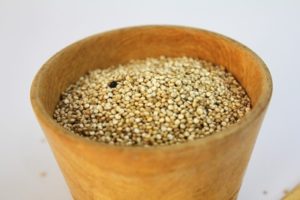
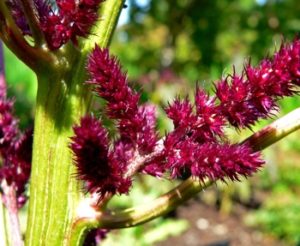
Some grain-like seeds without the adverse effects of grains are amaranth(rajgira), and quinoa.
Amaranth is in the limelight owing to its high nutritional profile compared to other seeds and grains. Amaranth has the highest protein content of 28% per cup compared to oats at 26% and rice at 13%. But its not just this. The big surprise is that the protein in Amaranth is a complete protein.
Yes! You read that right!
Let me repeat it –
The protein in amaranth is a complete protein! With a high nutritional profile! Take note all vegetarians!
Besides the protein Amaranth contains calcium, magnesium, potassium, phosphorus, and iron. In fact, one cup of uncooked amaranth has 31% of the RDA for calcium, 14% for vitamin C, and a whopping 82 % for iron.
On the same note quinoa also has an excellent nutritional profile, with a protein content only slightly low, 26% as compared to amaranth. Like amaranth, quinoa is also a complete protein with all amino acids present.
So if you want to replace grains, we recommend replacing then with amaranth and quinoa. However once again if you suffer from any lifestyle disease and are looking to reverse it, we recommend strictly limiting portions or even giving them up altogether.
Fun Fact: Chapati-holics here is what you could eat in future*
(* We don’t recommend chapati/bread regularly even with antioxidants)
Purple bread
Invention of a Singapore-based food scientist, Professor Zhou Weibiao. Professor Zhou Weibiao is a food scientist at the National University of Singapore.
Professor Zhou told CNN
“For the past 10 years, bread has been under attack.”
Bread while a staple in many countries is considered unhealthy because of various reasons. One of them being that it spikes the blood sugar quickly, in other words, it is a high glycemic index food. This will cause insulin resistance when consumed regularly and probably end in lifestyle diseases such as diabetes and obesity.
Professor Zhou’s solution was to invent a bread that is digested slowly and had cancer-fighting antioxidants. He extracted anthocyanins from black rice and added it to bread. Anthocyanins, when added to the bread, not only turns it purple but also slows the digestion rate by 20% compared to regular white bread.
Surprisingly, 80% of the antioxidant qualities are preserved in the bread crusts and crumbs even when baked at 200 degrees Celsius.
Prof Zhou told CNN –
“The challenge was to see if we could change the formula of bread, without changing the smooth texture of white bread that people really love.”
“Despite its antioxidant capacity and associated health benefits, the knowledge of using anthocyanins as an ingredient in food products is very limited.”
“If you want to enjoy the texture of white bread and slow down digestion, this is probably the best formula,” says Zhou.
“And the color isn’t bad, either.”
Anthocyanin: the purple colour
Anthocyanins is a natural pigment occurring in grapes, blueberries, brinjals, black rice and sweet potatoes. Apart from giving these foods their vibrant colour, anthocyanins have been proven to be rich in antioxidants that reduce inflammation, prevent cardiovascular disease, lower the risk of obesity and diabetes, and prevent cancer.
“Although, not all purple fruits are superfoods,” cautions Zhou, citing purple dragon fruit as an example.
The purple bread is not available commercially today. However, several food manufacturers have shown interest in it and are talking to Professor Zhou.
But do remember that purple bread, if and when available commercially, won’t necessarily be a healthy alternative to white bread for people with gluten allergy or diabetes. But for generally healthy individuals, it can be a healthier treat occasionally.
Frequently Asked Question on Chapati:
Q1: We have been eating wheat chapati for generations. So if our parents and grandparents were fine with it, how can it harm us?
Yes, we have been eating wheat for generations, however, please note that:
- Moden wheat, we eat today has changed
- Our environment have also changed
- As human race, we have also changed a lot
Moden wheat, we eat today has changed
Wheat is one of the oldest known grains, probably as old as civilisation itself. But did you know that there are almost 30,000 varieties of wheat! However, only a few varieties of wheat account for 90 percent of the wheat grown in the world. The wheat on the market today is a new breed, different from grains consumed by Indians just a 100 years ago.
However, only a few varieties of wheat account for 90 percent of the wheat grown in the world. The wheat on the market today is a new breed, different from grains consumed by Indians just a 100 years ago.
Modern wheat are very different from their heirloom variety. This difference is as a result of intense crossbreeding programs, which have turned the crop into something that is neither physically nor genetically like its old self.
While the classic plants grew over four feet tall, modern wheat (grown in 99 percent of the world’s wheat fields) is now derisively dubbed “dwarf wheat,” standing just two feet in height with an abnormally large seed head balanced atop its stocky stem.
So what was the purpose of this extensive breeding?
Well, wheat flour is the flour of choice for large food giants world over (Nestle, Britannia …. etc) for ready-made baking goods. And the finished product is superior in presentation, texture and taste with high gluten (& of course inferior in nutrition). The higher the protein, gluten, the better the kneading and baking qualities.
The higher the protein, gluten, the better the kneading and baking qualities. Unfortunately, most of the world farmers have adopted this high yield, high allergen, infection resistant wheat for profitability and ease of farming.
So higher gluten and better profits have been the purpose of this breeding and not increased nutritional value or our health. That’s why we have people getting diagnosed with more gluten allergies and celiac disease. Perhaps if we could switch back to the heirloom varieties of wheat the problem may abate.
Our environment has changed
Our air is polluted. The food we eat is polluted, laced with all kinds of toxic chemicals. Our water is polluted. We live in homes with Reverse Osmosis to clean our water, we install air purifiers in our homes, we are all aware of adulteration in commercial foods.
We have changed
Today we consciously look for health things. We use food grade BPA-free plastic (where is the cheap non-food grade plastic going?). Plastic compounds have been found in the umbilical cord of newborns. Each urban household is using poisonous cleaners like Harpic.
An apartment on an average has 300–400 flats. Where are the 400 bottles of Harpic flushed down the toilet going each month? (Ground water maybe? )We eat factory
We eat factory food, whose purpose is profit not our health. Our food, earth, water, lifestock is being poisoned continually by anybody who can make a personal profit. How long can we insulate ourselves in our homes?
Yet we are unwilling to accept that there is a serious threat to our health and our planet.
You still think these poisons have not reached your food or you? How many of us are already suffering digestive disorders? How many antibiotics, antacids and sodas are we taking each year for our stomach issues?
So what do you think can be the cumulative effect of modern food (bred for profit) plus your already bad digestion, low immunity and resistance? (due to poisoned environment, again for profit).
Please note that ever-increasing number of Indians are being diagnosed with obesity, diabetes, cancer, digestive disorders, arthritis, Alzheimer . . . . . and the list goes on.
In summary, we are not what our parents/ grandparents were. And the food we eat is not the food they ate. They got clean air, clean food & clean water. So if you are lucky enough to be in good health despite all of this, be aware, make informed decisions and stay lucky!
References:
- Lectin glycosylation as a marker of thin gut inflammation.
- Analysis of lectin binding in benign and malignant thyroid nodules.
- Elevated levels of serum antibodies to the lectin wheat germ agglutinin in celiac children lend support to the gluten-lectin theory of celiac disease.
- Natural human antibodies to dietary lectins.
- Purple bread: A new superfood?
- Is schizophrenia rare if grain is rare? (1985)
- Markers of gluten sensitivity and celiac disease in recent-onset psychosis and multi-episode schizophrenia. (2010)

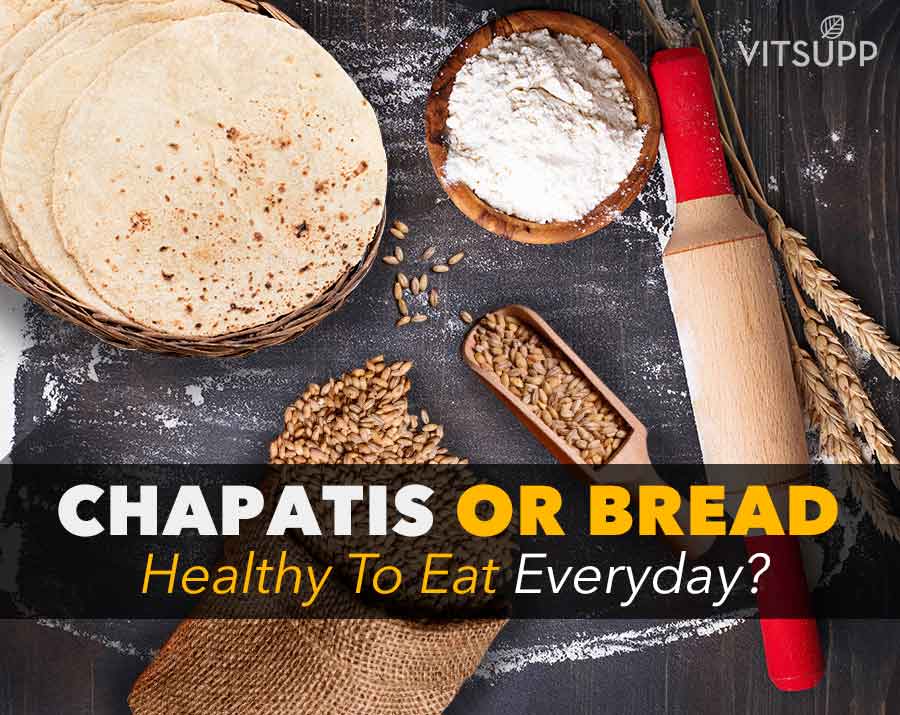
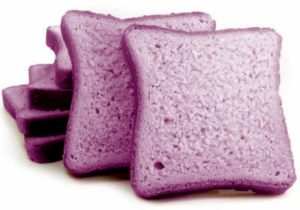
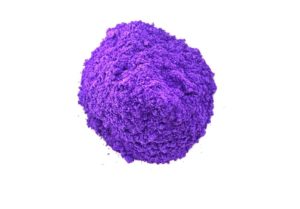

i find it helpfull
Thanks for the findings.IN US I am a guest. The host does not accept this theory and as such I am helpless. I am leaving for INDIA after 12 days (3rd October 2017), I will switch back to my old schedule of fresh vegetable fresh fish 250 gms of chicken per week and two eggs per week. If you are a dietician please mail me at ***********@gmail.com as I want to redraft a diet chart for myself.
I am sixty six years male from an Indian village. I have come to USA for a short stay for 4 months. After noon I am taking 4 nos instant chapatis and pre cooked vegetables micro waved for 8 mts. Within 2 hours I am forced to take BP reducing capsules else it goes up to that extent that I am developing body pain and deafness. While in India I used to prepare chapathi with punjab wheat flour(packed) and freshly cooked vegetable fish/chicken. I never had this BP problem. Can any one clarify? my email id ***************@gmail.com
Hello Dear Mr. Kollata,
I believe that your food is processed (you mentioned pre-cooked) or ready-made. This maybe the culprit. Prepackaged read-to-eat food has a high quantity of table salt (pure nacl/sodium chloride). Irrespective of what the authorities say, that stuff is toxic. The high salt in the purchased food must be whats pushing your Blood pressure up. I suggest you buy a hot plate/induction plate and cook a basic meal for yourself. Give away the ready-to-eat meals. 4 months is a long time. 🙂
P.S.
1) Consult with a physician too.
2) I sprinkle table salt to kill the weeds in my garden. Pour 1/2 kg of toxic table salt (1 mineral – sodium chloride) into the roots of any strong tree and see it die. Wonder what its long term use does to the human body! Suggestion : Switch to sea salt (80+ minerals) or pink himalayan salt (84 minerals).
thanks,
Anupama.
Interesting article. But what about spelt flour as an alternative to wheat flour? Heard that was good for the body?
Superb article but what about horse gram{chana in hindi} and all lentils{deal in hindi}. What about sprouting